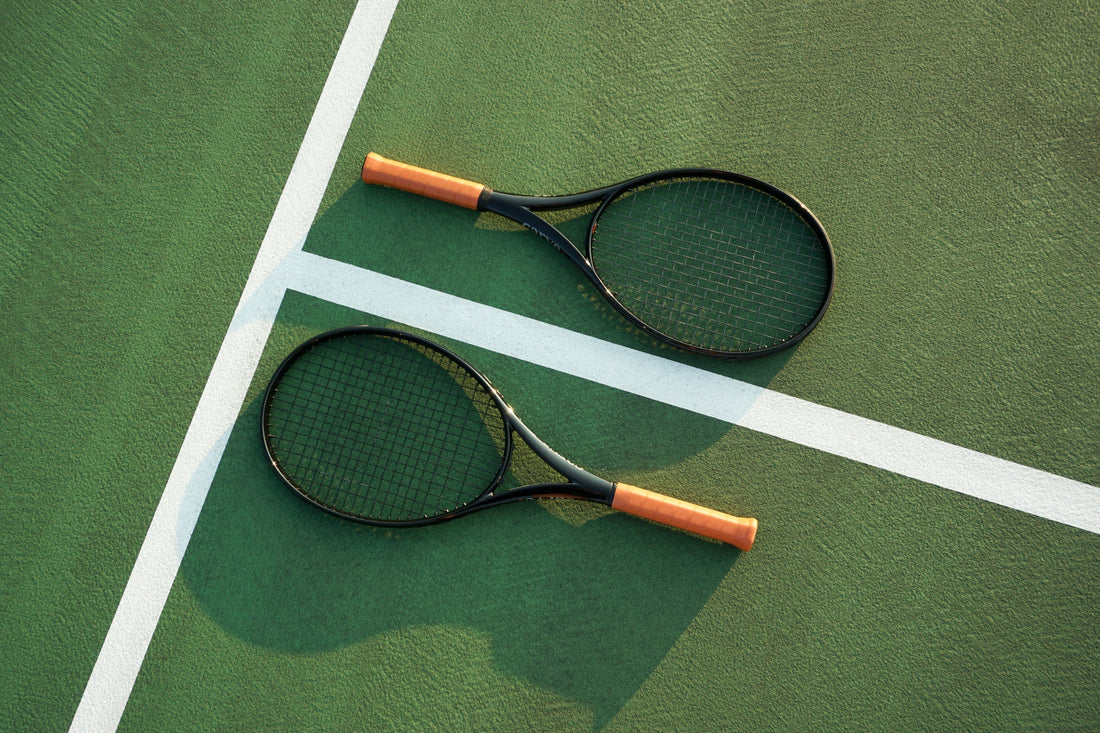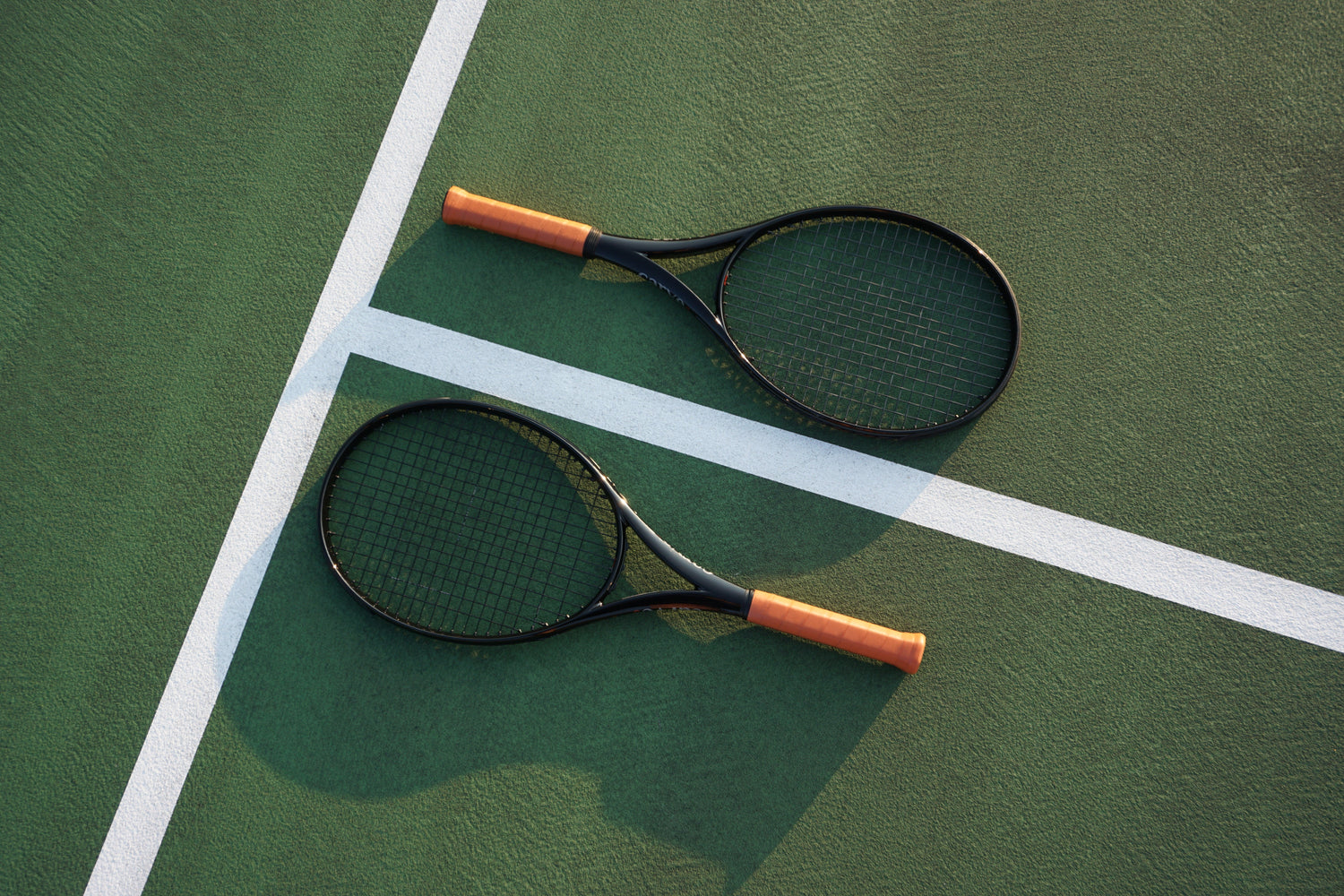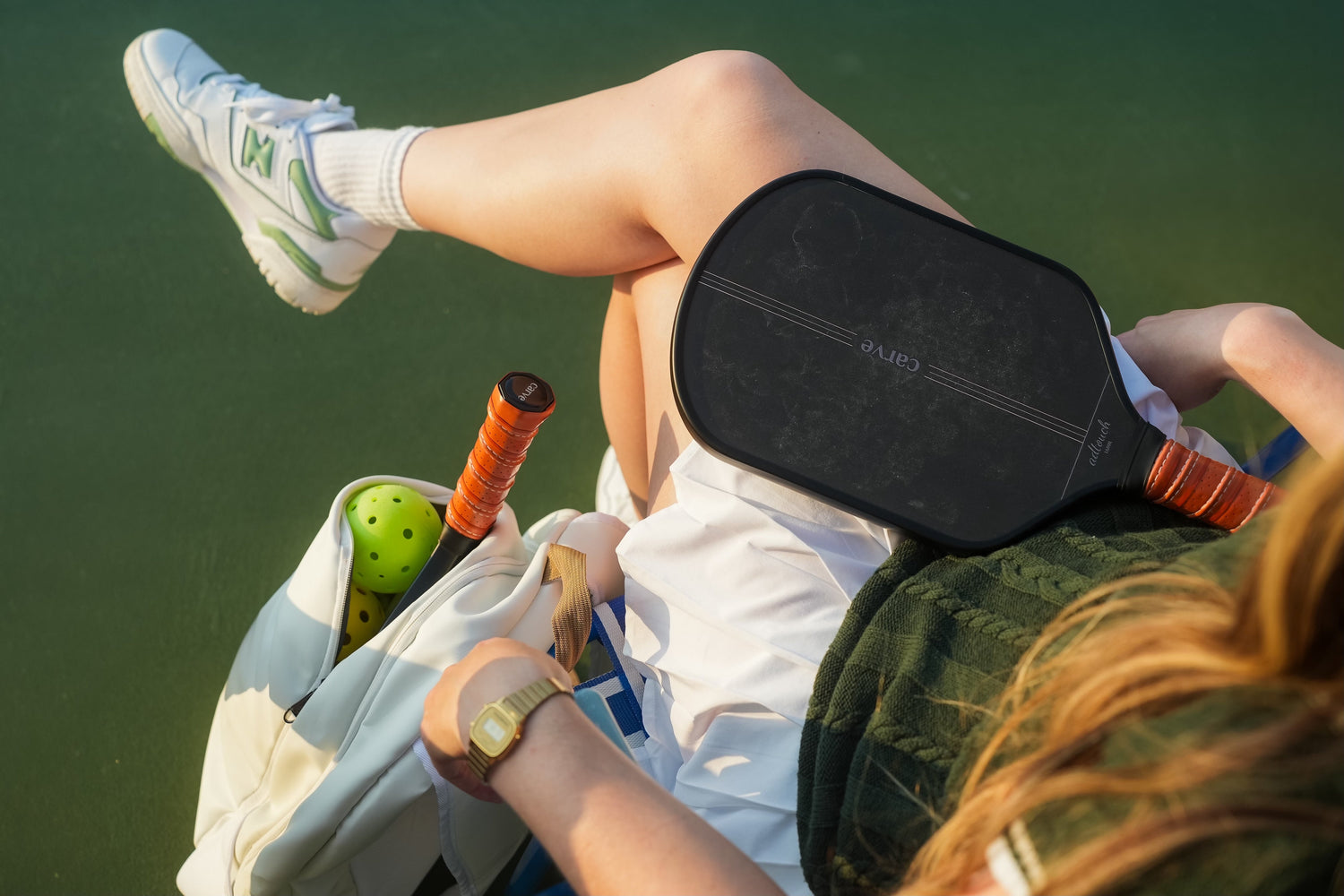
Understanding Tennis Racket Specifications: A Complete Breakdown
In today’s modern tennis game, buying a racket can be incredibly confusing. At Carve Sports, we believe the right tennis racket is essential in unlocking your best game. Whether you’re a beginner or a seasoned player, understanding racket specifications can help you make an informed decision. Here's a breakdown of the most common specifications, explained in an easy-to-digest format.
Head Size: Control vs. Power
- Definition: The surface area of the stringbed.
- Typical Measurements:
- Mid-Sized (98 or less sq in): Enhanced control, suitable for precise shots.
- Mid-Plus (99-102 sq in): A balance of control and power.
- Oversized (103+ sq in): Larger sweet spots for added power, perfect for beginners.
- Effects:
- Larger stringbed = Bigger sweet spot, more power, greater margin for error.
- Smaller stringbed = Greater control, requiring more precision.
- Recommendation: You won’t go wrong with a 100 sq. in. head size. If you generate a lot of your own power with a faster swing speed, consider a smaller head size for added control.
Length: Standard vs. Extended
- Definition: How long the racket is from tip to tail.
- Typical Measurements:
- Standard Length: 27 inches.
- Extended Length: 27.5 inches or more, up to 29 inches (maximum).
- Effects:
- Longer rackets = More leverage, spin potential, and power but harder to maneuver.
- Shorter rackets = Easier to handle, less power and spin potential.
- Recommendation:
- We recommend extended length rackets only for those with fully developed swing techniques and feel the need or desire for extra leverage or reach. The majority of casual and competitive players will stick to the 27 inch frame.
Weight: Lightweight vs. Medium vs. Heavy Rackets
- Definition: The unstrung weight of the racket.
- Typical Measurements:
- Lightweight: 10.1 ounces or less (<286 grams).
- Medium: 10.1-11.0 ounces (286-312 grams).
- Heavy: 11.1 ounces or greater (>315 grams).
- Effects:
- Lightweight = Easy maneuverability, suitable for beginners, easier on the arm, lower stability.
- Medium = Balanced between stability and maneuverability, these rackets are versatile and suit a variety of playing styles.
- Heavyweight = Greater stability and power, ideal for advanced players.
- Recommendation: Beginners should opt for lighter frames, while advanced players can handle heavier options for enhanced stability. The most common intermediate style rackets fall between 10.1 and 10.8oz unstrung.
String Pattern: Spin and Control
- Definition: The number of main (vertical) and cross (horizontal) strings.
- Typical Patterns:
- Open (16x19): More spin and power.
- Dense (18x20): Better control and durability.
- Effects:
- The more open, the more spin and power.
- The more closed, the “deader” the strings are, but more control.
- Reason: the more strings there are, the less they will deflect upon impact - i.e. less trampoline effect.
- Recommendation: A 16x19 pattern suits most players, offering a balance of spin and power.
Beam Thickness: Feel and Power
- Definition: The thickness of the racket frame, typically measured in millimeters.
- Typical Measurements:
- Thin (22mm or less): Control oriented.
- Mid (23-26mm): For all around performance.
- Wide (26mm or more): For enhanced plow-through power.
- Effects:
- Thinner beams = More control and feel.
- Wider beams = Enhanced power and stability.
- Recommendation: Beginners might prefer thicker beams for power, while advanced players often enjoy the feel of thinner beams, increasing the feedback felt on every shot.
Flex: Stiffness vs. Comfort
- Definition: A measurement of how much the frame bends under stress, noted on the RA scale.
- Typical Measurements:
- Flexible (62 or lower RA): Low power, more feel and comfort.
- Medium (63-67 RA): Balanced stiffness. Comfortable but offering additional power.
- Stiff (68-72 RA): Excellent power transmission, less feel.
- Effects:
- Flexible frames absorb more shock, providing comfort and control, but are lower powered, sometimes making it difficult for beginners.
- Stiffer frames generate more power and can enhance stability on lighter rackets but transmit more vibration to the player.
- Recommendation: Flex is a subjective choice based on player comfort and style. A beginner player may prefer a light and stiff frame, or they may like the comfortable feel of flexibility, but should pair that with a larger head size so that they don’t reduce power levels too much.
Balance: Head-Heavy vs. Head-Light Rackets
- Definition: Weight distribution in the racket.
- Typical Measurements:
- Head-Light (HL): Balance point closer to the handle (e.g., 315-330mm).
- Evenly Balanced: Balance point falls at 343mm on a standard length racket.
- Head-Heavy (HH): Balance point closer to the head (e.g., 344mm or more).
Note: Sometimes balance is measured in points, such as "7 points HL." Each point equals 1/8th of an inch, measured from the mid point.
- Effects:
- HL rackets absorb shock better and are more maneuverable.
- Evenly balanced rackets provide a mix of power and control.
- HH rackets offer added power and stability, but are harder to swing.
- Recommendation: For lighter rackets, even balance or HH helps maintain stability. For heavier frames, HL ensures better maneuverability. On a light racket, we recommend the balance to fall between 325 and 340mm. On mid-heavy frames, we typically recommend no more than a 330 balance point.
Why Choose Carve Sports Rackets?
Carve Sports is committed to providing high-performance rackets at an affordable price. Our range of tennis rackets is designed to ensure power, control, and comfort in every swing, and we make it easy to decide which frames are right for you. We stand by our commitment to make high performance products without the premium price tags, and will be your trusted partner for you tennis journey, at any skill level.
Shop Now
Ready to find your perfect racket? Explore our full range of Carve Sports Tennis Rackets today and take your game to the next level.
_
If you have any questions, please reach out to us at support@carvesports.co.
P.S. Stay tuned for our lightweight racket, designed for ultimate maneuverability, control, and arm comfort coming soon!

